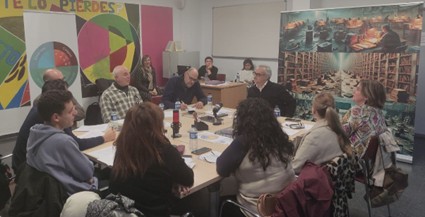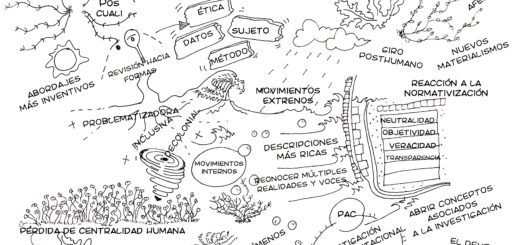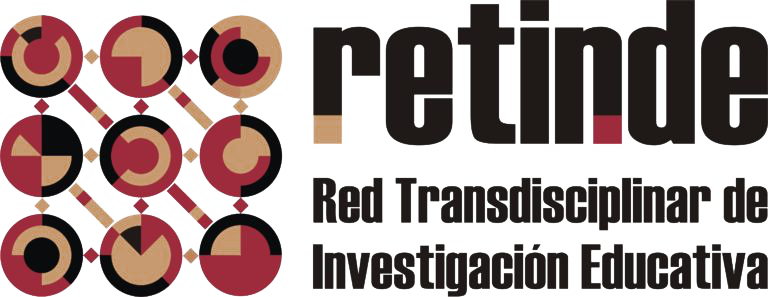The Digital Transformation of University Teaching: The Four Futures Exercise
The study was structured into several working sessions that explored four future scenarios (Growth, Collapse, Discipline, and Transformation), followed by a closing session focused on visualising the preferred future. The activities draw on the tradition of futures studies, which encourages reflection on possible and plausible alternatives as a strategy to guide institutional planning and support processes of strategic anticipation. A full report of this study is available on Zenodo https://doi.org/10.5281/zenodo.17140904.
The use of «alternative futures» (or «scenarios») is applied in the context of an institution or organisation to plan and move towards its preferred future.
The necessary components of a futures-visualisation process are as follows, in this order: (1) Appraising the past and understanding the present. First, a shared understanding of the history of the community or group must be built, reaching back to its origins—if possible—and not only to the recent past. It is not feasible to think usefully and creatively about the future of something without understanding its raison d’être and the multiple facets of its past. For this activity we used the «Organisational Retrospective Analysis» technique, which helps participants reflect on past events and understand how they have shaped the organisation’s development. It enables the identification of key events (deployment of new infrastructure, curriculum changes, teaching-innovation projects, etc.), discussion of achievements and challenges, and an assessment of their present-day impact by connecting past and present. (2) Forecasting aspects of futures. Second, potential challenges and opportunities must be analysed. In our case, the group conducted a SWOT analysis to identify internal factors (strengths and weaknesses) and external factors (threats and opportunities). (3) Experimenting with and visualising alternative futures. Third, and crucially, participants explore four alternative futuresbased on different combinations of trends. This exercise prepares them to visualise a preferred future for the community, grounded in the past, the present, and the alternative futures analysed. Visualising the preferred future is the principal goal of the entire process. To do so, we used multimedia narratives for each of the four scenarios and the COCD Box technique to classify ideas and make strategic decisions, especially useful in contexts of innovation and problem-solving, by enabling the evaluation and prioritisation of ideas according to their feasibility and
organisational impact.

All «images of the future» can be grouped into four generic categories: the four alternative futures. They are «generic» because the specific images belonging to each share theoretical, methodological, and data foundations that differentiate them from the others. Each alternative has «good» and «bad» features; none is, in itself, wholly good or bad. There is no «optimal» or «unfavourable» scenario, nor a «most likely» one. In the long run, the four generic forms are equally likely to occur, and all should therefore be considered with the same attention and seriousness.
Growth scenario
This scenario imagines a world that continues to expand the economy, technology, and consumption as the main drivers of progress. Digital innovation, biotechnology, and automation increase productivity, open new markets, and promise to improve quality of life. Cities densify, education becomes more flexible and personalised, and science targets bottlenecks: abundant energy, sustainable food, preventive health, and smart logistics. Continuous growth, however, requires coordination and vigilance. Sustaining it entails substantial investment in infrastructure and the implementation of adaptive regulation to promote equity, well-being, and resilience, as well as cooperation among universities, firms, and governments to accelerate the transfer of knowledge into applied solutions.
Collapse scenario
This scenario describes a profound breakdown of the systems that sustain our societies. Its origins lie in interdependent crises (climatic, energy, health, and geopolitical) that reduce the capacity of states and markets to coordinate basic needs such as water, food, energy, information, or security. Unequal access to goods and services exacerbates social conflict. Trust in institutions and experts erodes, while less complex and more reliable local solutions are prioritised. Technology does not disappear, but its availability is irregular and costly. Science pivots towards adaptation: essential public health, agroecology, water resilience, climate shelters, emergency management, and risk literacy. Collapse does not necessarily mean an «end» but rather a tipping point that may give rise to new approaches and solutions.
Transformation scenario
This scenario proposes a profound change in how we live and organise our societies. It is not about marginally improving what already exists, but about doing things differently. The economy focuses on caring for people and the planet. Success is measured not only by economic growth but also by well-being, justice, and respect for planetary limits. Science is open: it shares data and tools, engages in dialogue with other forms of knowledge, and listens to citizens. Citizen labs and collaborative projects emerge. Work is organised in networks and cooperatives; learning is lifelong, with credentials transferable across jobs and universities. Politics and institutions introduce new decision-making forms: participatory processes, clear rules for algorithms, and public evaluation of innovation. Modular infrastructure, renewable energies, and cities adapted to environmental risks are promoted.
Discipline scenario
This scenario imagines a society that decides to set clear limits to live within the planet’s boundaries. Superfluous consumption is reduced, repair is prioritised over purchase, and everyday life is reorganised to save energy, water, and materials. Technology does not disappear, but is used judiciously: robust, open, and maintainable solutions. Cities commit to proximity (neighbourhoods with essential services, active mobility, and green spaces) and to local economies that shorten supply chains. Public policy sets firm rules: stringent environmental standards, data transparency, and public evaluation of projects. Education strengthens civic competencies. Progress is measured with indicators such as education, health, air quality, food security, and social cohesion. Tensions may arise due to restrictions or inequalities if rules are not applied fairly or if authoritarian temptations appear. The key is to combine clear rules with citizen participation, accountability, and mutual support to achieve a more frugal, stable, and dignified life.
In our study, the Collapse scenario conceives the digital transformation of university teaching hamstrung by scarcity: resources are lacking to finance infrastructures and technological ecosystems; technophobic attitudes proliferate among part of the staff and the student body; and the supply grows in a disorderly fashion toward an “edu-hyperinflation” that saturates the system and devalues credentials. Added to this are serious problems of academic dishonesty that erode trust in the digital. The result is a fragile, reactive ecosystem of uneven quality. In the Growth scenario, universities drive digitalisation through smart management: processes are optimised with technological support; progress is made toward sustainable digital education by adopting Universal Design for Learning; and personalised learning supported by advanced platforms becomes widespread. The pedagogical climate fosters digital creativity and turns teachers and students into co-creators of more relevant, far-reaching learning experiences. In the Discipline scenario, digitalisation advances but is tightly channelled by control policies: strict administrative regulations are imposed, processes are standardised under quality norms audited by external agents, and structured learning is consolidated with homogeneous curricula in predefined environments. Integrity is ensured through ethical codes and legislative frameworks, at the cost of reduced flexibility and pedagogical innovation. Finally, in the Transformation scenario, the university reimagines its mission: innovation spaces (labs and collaborative centres) are created; technology becomes “invisible” thanks to 360° connectivity integrated into the experience; and the learning community co-designs individualised pathways. The system promotes self-regulation through micro-credentials and continuous education, weaving fluid trajectories between learning, work, and research.
Taken together, Dator’s «Four Futures» exercise enables the university community to rehearse decision pathways across divergent scenarios and, from there, to agree on shared principles for its preferred future: a digitally transformed university with pedagogical purpose, equitable, open, and sustainable, that strengthens learning quality and the institution’s social mission.
References
Dator, J. (2019). Jim Dator: A Noticer in Time: Selected work, 1967-2018 (Vol. 5). Springer International Publishing. https://doi.org/10.1007/978-3-030-17387-6
Valverde-Berrocoso, J. (2025). Escenarios de futuros: Anticipación estratégica en la transformación digital universitaria. En M. Area-Moreira, J. Valverde-Berrocoso, y B. Rubia-AVi (Eds.), Transformación digital de la enseñanza universitaria. Analíticas académicas y escenarios de futuro (pp. 63-84). Octaedro.
Valverde-Berrocoso, J., Acevedo Borrega, J., & González-Fernández, A. (2025). Transformación digital de la educación universitaria: Un estudio de futuros. Zenodo. https://doi.org/10.5281/ZENODO.17140904

Authorship:
Jesús Valverde Berrocoso
Research Group: «Nodo Educativo»






